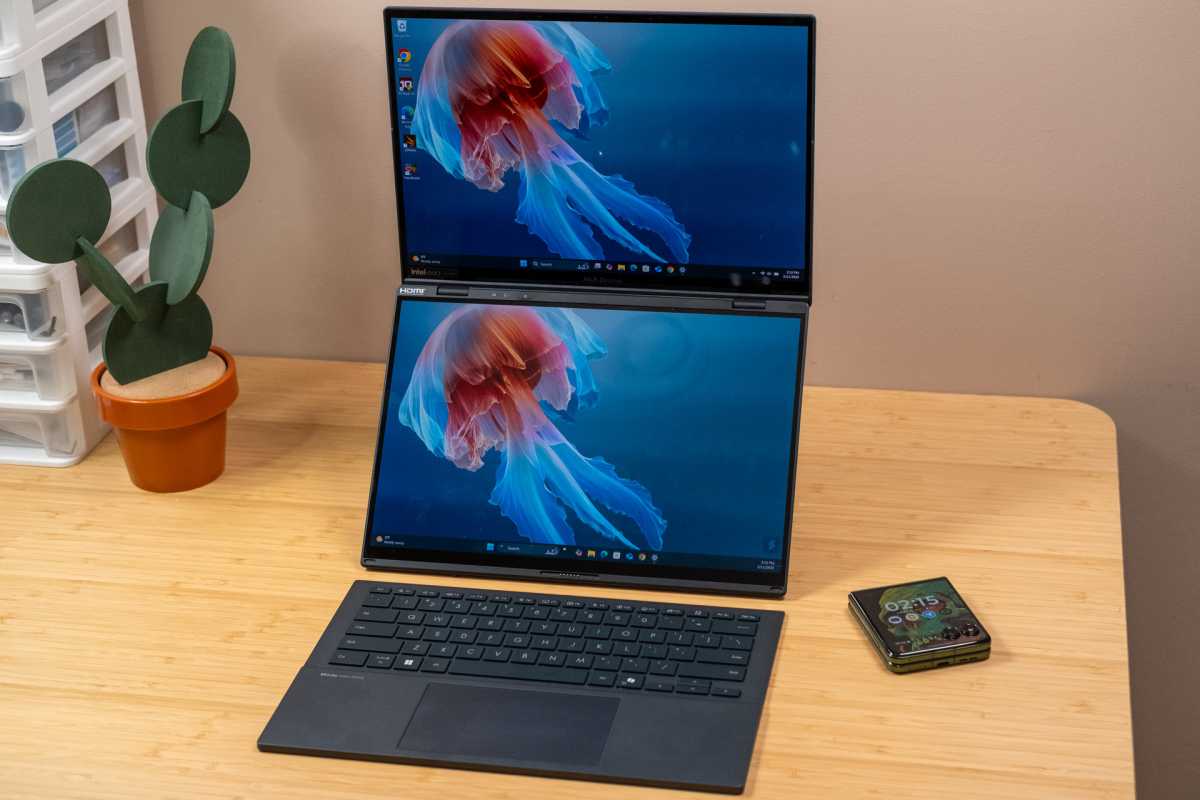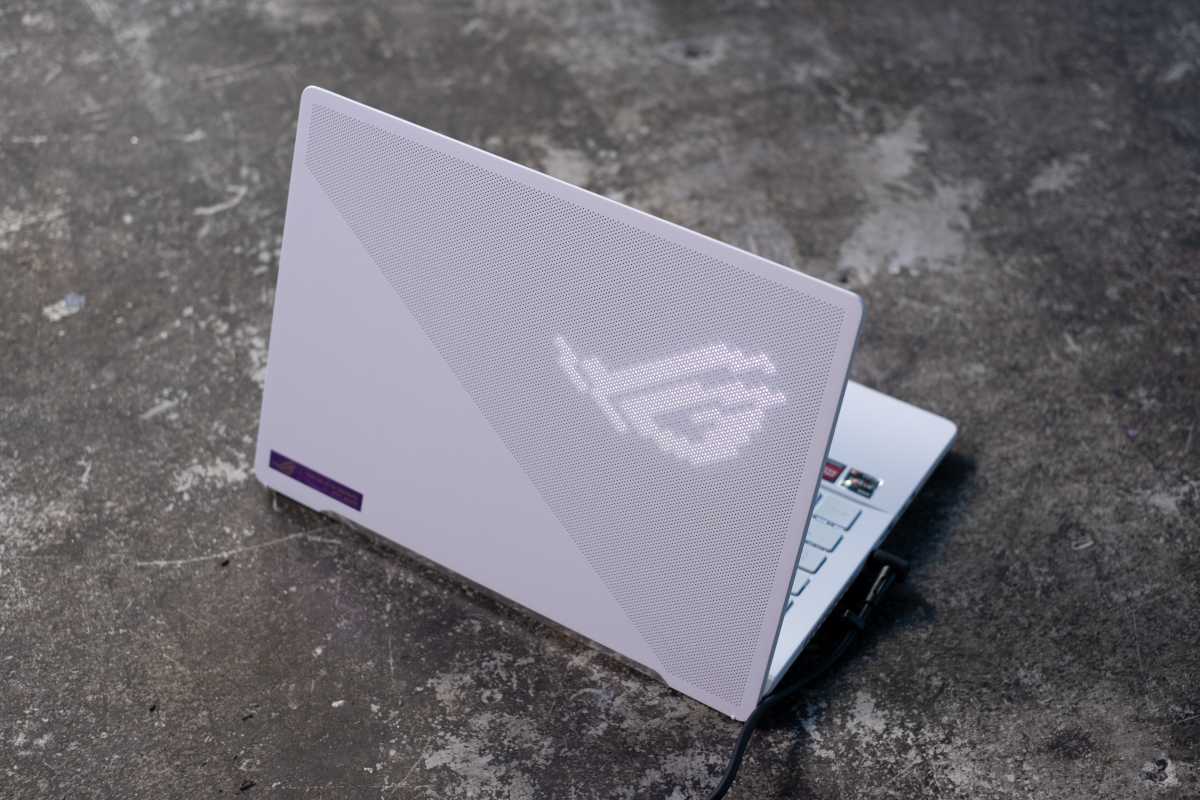Remember the first laptops? They were weird. Ancient laptops were often as large as desktop computers but only had tiny screens that could only display a few dozen characters.
Over time, progress ironed out the flaws and peculiarities of those first laptops—and the ultrabook trend of the 2010s pushed laptops to their natural conclusion: thin, light, and anonymous.
But in 2025, a new trend has emerged. As Intel, AMD, and Qualcomm compete to provide more options, and as experimentation becomes less risky on certain fronts, the PC laptop arena has witnessed an explosion of laptops that are unique, unusual, and (in some cases) just plain odd. And if you ask me? I’m loving it.
Dual-screen, foldable, and rollable laptops have become a reality
Laptops have always required compromise when it comes to display size. A larger display is a better visual experience than a smaller one, but makes the laptop less portable. This trade-off has long haunted laptops.
But not anymore.
The Asus Zenbook Duo and HP Omen X 2S, both released in 2019, were some of the first laptops to seriously hint at this possibility. They weren’t the first laptops with dual displays—remember the Lenovo ThinkPad W700ds?—but they were more affordable and more practical than prior attempts. HP didn’t stick with the idea, but Asus did.

IDG / Ryan Whitwam
But while Asus was an early leader in dual-screen laptops, it was Lenovo who took the idea and truly ran with it. The company has pushed laptop displays to absurd limits with numerous world-first designs, including the first laptop with a foldable OLED display, first laptop with a rollable OLED display, and first laptop with an E-Ink display on the lid.
Lenovo also released the first dual-screen laptop with a second full-sized display in place of a physical keyboard—the Yoga Book 9i—although Asus has since responded in kind with its ZenScreen Duo.
The biggest surprise is not that these laptops exist, but that many of them are excellent. The Yoga Book 9i and Asus Zenbook Duo dual-screen laptops have received positive reviews, and the 2024 Yoga Book 9i won a PCWorld Editors’ Choice award. More recently, Lenovo’s first rollable OLED laptop also won an Editors’ Choice award.
Repairability returns, open source rises
The ultrabook trend didn’t just result in laptops that all looked the same—it also drastically reduced repairability. User-replaceable components and screws were out, soldered components and glue were in. This, we were told, was the only way to achieve thin-and-light designs.
Not everyone was happy about that, however, and a countermovement began. We saw the rise of new laptop makers that prioritized repairability, the most obvious example being Framework and their lineup of laptops with extensive customization, full user repairability, and modular upgrade options. Though not perfect—Framework laptops are often pricey for the performance and battery life—the company has become a rallying point for PC enthusiasts and “right to repair” proponents.
Framework is far from alone in advancing this trend. Anyone willing to try Linux—which is rapidly rising in popularity—have plenty of oddball options. MNT’s Reform and Pocket Reform offer an open-source approach with extensive documentation that lets users fully customize their systems, right down to the level of designing new PCBs. The Argon One Up brings the Raspberry Pi to a modern laptop form factor. And enthusiasts so deep in DIY that they’re willing to write their own drivers can opt for laptops like the DC Roma II, which has a RISC-V chip inside.
Of course, most people will stick to traditional laptops from mainstream makers. They’re more familiar, more practical, and often a better value. However, the existence of quirky laptops provides options that weren’t available 5 to 10 years ago. They also put pressure on larger companies, both by offering more repairable products and by introducing newcomers to open source and right to repair.
Wild features and quirky add-ons
Repairability has improved in part due to lower manufacturing costs and more widespread availability of factories across the globe that can produce PC components at reasonable costs, even with small production runs. This has also led to another positive: lots of quirky features.
Gaming laptops have benefited greatly from this new reality. Asus introduced the AniMe Matrix display, a customizable monochromatic LED grid on the lids of some Asus gaming laptops that can show logos and even animations. It’s the kind of thing that used to be reserved for prototypes or one-off showpieces beyond the reach of most shoppers, but it’s now a key feature in mid-range to high-end Asus gaming laptops.

Adam Patrick Murray / Foundry
Acer, meanwhile, introduced an entire line of SpatialLabs glasses-free 3D laptops (and, more recently, a monitor). These provide a convincing 3D experience in a handful of games and productivity software. And while the SpatialLabs monitor is too expensive for what it offers, the SpatialLabs laptops are reasonable with prices that start around $2,000.
And Framework deserves another mention here for what I think is the company’s most practical feature: swappable physical connectivity. Instead of building ports directly into the laptop’s core design, Framework lets users mix and match ports in a modular way—and those ports can be purchased with the laptop or later after the fact. If you replace your HDMI display with one that has USB-C, for example, you can simply buy a new USB-C port from Framework.
Weird laptops aren’t going anywhere
Of course, we’ve seen weird features before. Asus once debuted a laptop with external liquid cooling, and Razer made laptops with keys that included LCD screens, and Acer even sold laptops that had the touchpad behind the keyboard.
But today’s trend of “weird laptops” is different because these modern quirks are no longer one-offs meant to gin up hype. They’re core features that laptop makers are improving through multiple iterations and using to set themselves apart from competitors.
Put simply: weird is here to stay, and I’m all for it.
Accedi per aggiungere un commento
Altri post in questo gruppo

Say what you will about America’s tech titans cozying up to the curre

Sunseeker is following a new trend with its budget-priced model L3 ro

If you’ve been wondering when the “AI” branding spigot might be turne

One of the strengths of local AI is its ability to filter out unwante

Microsoft 365 users will now have access to a few more Copilot AI fea


A few days ago, Microsoft released a new update for its Edge browser
